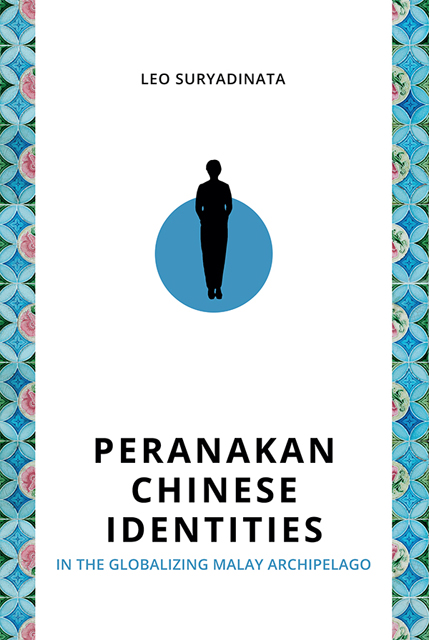Book contents
- Frontmatter
- Contents
- Preface
- Acknowledgements
- Part I Regional Dimensions: Indonesia, Malaysia and Singapore (IMS)
- Part II Focusing on Indonesia
- Appendix 1 The Prospects of the Peranakan Community at the Age of Globalization, by Tan Ta Sen
- Appendix 2 Some Books on the Peranakan Chinese Published between 2007 and 2021
- Bibliography
- Index
- About the Author
Appendix 1 - The Prospects of the Peranakan Community at the Age of Globalization, by Tan Ta Sen
Published online by Cambridge University Press: 01 September 2023
- Frontmatter
- Contents
- Preface
- Acknowledgements
- Part I Regional Dimensions: Indonesia, Malaysia and Singapore (IMS)
- Part II Focusing on Indonesia
- Appendix 1 The Prospects of the Peranakan Community at the Age of Globalization, by Tan Ta Sen
- Appendix 2 Some Books on the Peranakan Chinese Published between 2007 and 2021
- Bibliography
- Index
- About the Author
Summary
Ladies and Gentlemen, I felt extremely honoured to be here today to share with you my thoughts on the prospects of the Peranakan community at the age of globalization. Being a Baba and Nyonya yourself, I am sure you are very concerned about the future of the Peranakan community. The word “Peranakan” is more commonly used in Bahasa Indonesia than in Bahasa Melayu. In the past, the terms “Baba and Nyonya” were commonly used to refer to the localized Chinese. However, Peranakan in fact includes all localized foreigners or their descendants. Thus, we have the Chinese Peranakans (Baba and Nyonya), Indian Peranakans (Chitty or Mamak-Indian Muslim), Portuguese Peranakans, and European Peranakans (Eurasian or Serani). Melaka is the home of the Peranakans in both Malaysia and Singapore and so it is not only appropriate and relevant but also historically significant for me to deal with this topic here. Although I am a Singaporean, and not a Baba myself, in the past decades I have business concerns in Melaka and frequently visited Melaka. Thus, I am virtually a local Melakan, living at the centre of the old town and have witnessed the change that has taken place in the past two decades.
I would like to begin by giving you a few significant glimpses into the history of the Chinese diaspora as well as the eventual development of the Peranakan community in Melaka so as to set the tone of proper historical perspective. The Chinese have been migrating southward from China to Southeast Asia for centuries, driven from their homeland by economic necessity, political disturbance, flood and drought. Chinese diaspora outside China are generally addressed as Tang Ren (Teng Lang, 唐人) because since the seventh century in the Tang dynasty, Chinese mariners and traders were engaging in considerable international maritime trade, travelling as far afield as East Africa through the Straits of Melaka. They actually went to mainland Southeast Asia as early as the Qin dynasty and were addressed as Qin Ren (秦人). However, they were merely sojourners before the fourteenth century.
Cheng Ho’s (Zheng He, 郑和) historic seven voyages to the western ocean in the early fifteenth century marked the first wave of Chinese migration to Southeast Asia. Cheng Ho discovered the presence of Chinese settlements in Island Southeast Asia.
- Type
- Chapter
- Information
- Publisher: ISEAS–Yusof Ishak InstituteFirst published in: 2023



